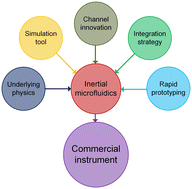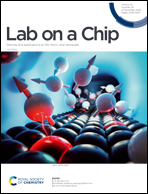Inertial microfluidics: current status, challenges, and future opportunities
Abstract
Inertial microfluidics uses the hydrodynamic effects induced at finite Reynolds numbers to achieve passive manipulation of particles, cells, or fluids and offers the advantages of high-throughput processing, simple channel geometry, and label-free and external field-free operation. Since its proposal in 2007, inertial microfluidics has attracted increasing interest and is currently widely employed as an important sample preparation protocol for single-cell detection and analysis. Although great success has been achieved in the inertial microfluidics field, its performance and outcome can be further improved. From this perspective, herein, we reviewed the current status, challenges, and opportunities of inertial microfluidics concerning the underlying physical mechanisms, available simulation tools, channel innovation, multistage, multiplexing, or multifunction integration, rapid prototyping, and commercial instrument development. With an improved understanding of the physical mechanisms and the development of novel channels, integration strategies, and commercial instruments, improved inertial microfluidic platforms may represent a new foundation for advancing biomedical research and disease diagnosis.

- This article is part of the themed collection: Lab on a Chip HOT Articles 2022


 Please wait while we load your content...
Please wait while we load your content...